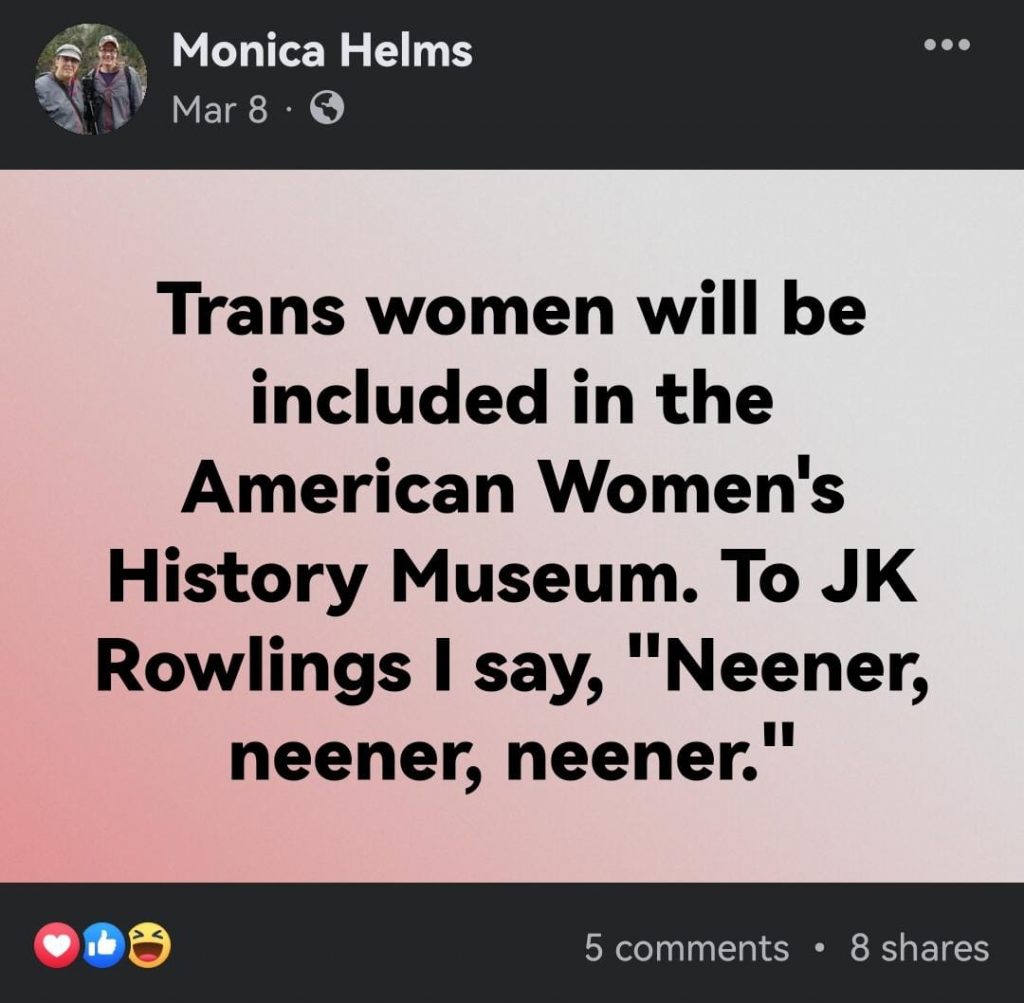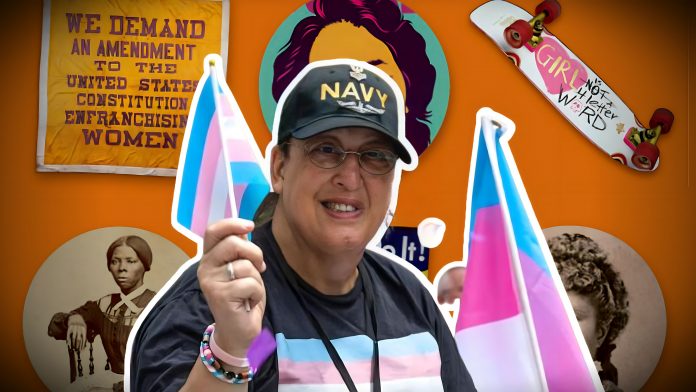The Smithsonian’s new Museum of American Women has announced it will be featuring at least one trans-identified male in the name of “inclusivity.” Monica Helms, the designer of the trans pride flag, will be inducted in the yet-to-be-opened facility despite concerning past behavior.
The Smithsonian first announced its new woman-centered museum last year when it inked a deal in the SoHo neighborhood of New York City. Despite the fact it does not estimate the physical building will be opened to the public for at least 10 years, announcements about the design, facilities, and curation of the museum have already begun.
On the Smithsonian’s website, women are being featured whose exhibits and information will assumedly be present in the physical museum. Among them are prominent figures who changed the course of American and world history, including Henrietta Lacks — an African American woman whose “immortal” cell line has provided invaluable medical data since the 1950s — and Native American veteran and activist Grace Thorpe.
But among the brave and inspirational female leaders will be some males who identify as “women.”
In 2022, museum founder Abby Trott said she had brought in a team “of amazing, talented women” to design the upcoming exhibits, stating: “We’re trying to create a space to allow women — and anyone who identifies as a woman — to have a physical space to bond and be seen and heard and have a space to define what it means for them to be a woman.”
Among those males included in the Women’s Museum will be Monica Helms, the designer of the trans pride flag.

Born Robert Hogge, Helms designed the first trans pride flag in 1999. In his memoir, More Than Just a Flag, Helms – who named himself after a fictional battle in Tolkien’s The Lord of the Rings – described himself as an “enlightened” being who is able to “float” between multiple worlds.
As previously reported by Reduxx, Helms once admitted to wearing his mother’s underwear as a youth, and stated that he “studied” girls at his school with an obsession that slowly turned to “lust.”
While serving with the US Navy during the 1970s, Helms began stealing the undergarments of female neighbors living in his apartment complex in South Carolina after seeing a bra in the washing machine of the laundry room.

“Images of the days when I tried on my mother’s underwear came back to me, pulling primordial feelings with them… the obsession of losing my virginity had filled my every waking moment…” Helms said of the experience. “Up until this point, my sexual desire for a first encounter had pushed every other fantasy of mine onto the back burner. As I stood watching the bra swirl around in the dryer, I sensed a growing desire to dress as a woman and to see the hidden woman within me.”
Helms then described taking the bra out of the machine and rushing back to his apartment to model it for himself in the mirror. He expressed having been sexually aroused at the sight of himself in women’s undergarments.
Helms later married a woman who would discover his crossdressing fetish after walking in on him wearing one of her dresses. While she disapproved, Helms would continue regardless, and began spending family finances on clothing, makeup, and hormones. He also invested in attending get-togethers, with other male cross-dressers, where lessons were provided on how to talk and walk “like a woman.”
While Helms’ was indulging his expensive crossdressing habit, the family declared bankruptcy and lost their home in foreclosure.
After decades of marriage, Helms decided to divorce his wife and leave his children so he could pursue his life as a trans-identified male.
“They didn’t want me to leave, which made me feel even worse. But I couldn’t continue hiding my doctor visits and medical costs, not to mention receiving hateful comments from Donna about my shaved legs and breast growth,” Helms wrote in his autobiography.
But perhaps most disturbingly, Helms has authored several short stories with sexual themes, including ‘forced feminization,’ wherein men are transformed into women as a humiliating punishment. One story in particular sexualizes a little girl, with Helms claiming the story concept came to him in a dream. In the story, titled “A Woman Scorned,” a witch who perpetually appears as a teen girl pursues an adult man until they get married and have a daughter with similar “powers.”
Earlier this year at the age of 71, Helms announced he was adopting a teen boy with his significantly younger partner. The 14-year-old will be raised as his “trans daughter.”
Helms designed what is currently understood as the transgender pride flag in 1999, just a few years after divorcing his wife and ostensibly abandoning his children. During an interview held in 2017, Helms stated that blue represented young boys and pink represented young girls.
He has claimed the baby blue and pink pastel stripes came to him by way of “divine intervention.” A pride flag created by Helms will be displayed in the Smithsonian’s new Museum of American Women.
In 2014, the Smithsonian’s National Museum of American History accepted Helms’ original pride flag and placed it in the permanent archives.
Reduxx is your source of pro-woman, pro-child safeguarding news and commentary. We’re 100% independent! Support our mission by joining our Patreon, or consider making a one-time donation.
